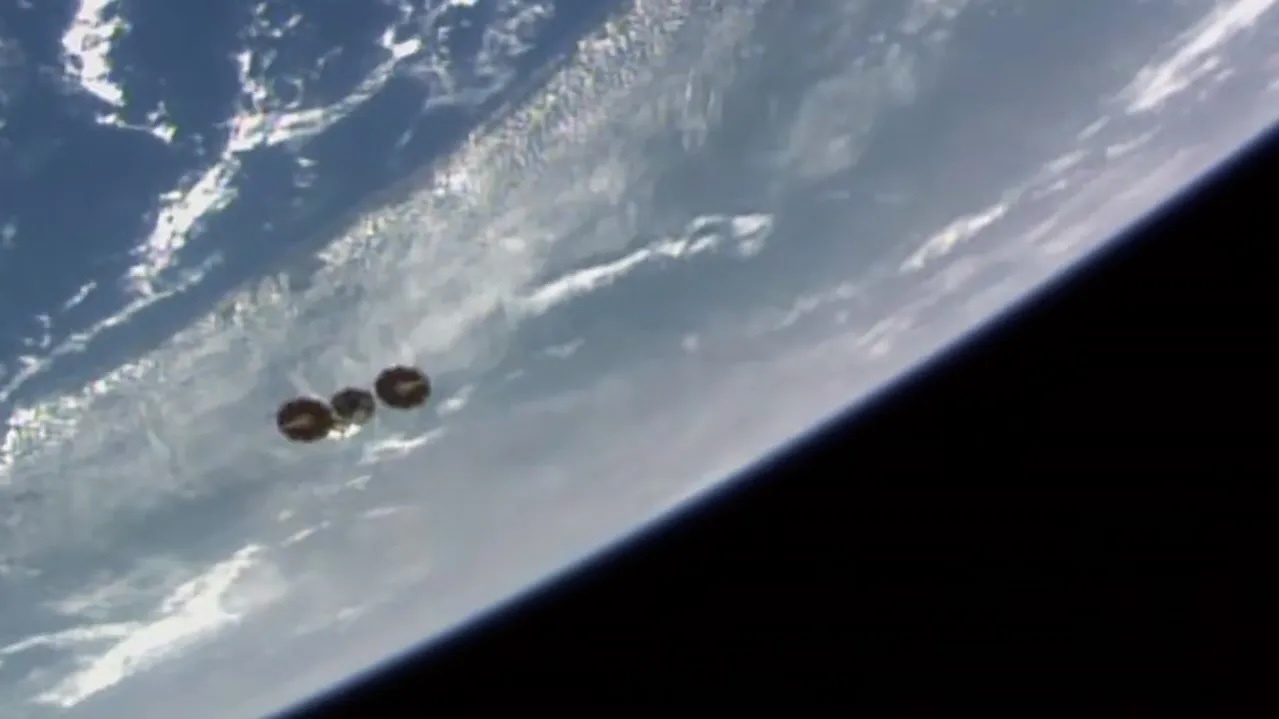30.03.2025

The Cygnus spacecraft, with its prominent cymbal-shaped UltraFlex solar arrays, departs the International Space Station as both spacecraft orbited above the Atlantic Ocean.
At 6:55 a.m. EDT, the S.S. Richard “Dick” Scobee Northrop Grumman Cygnus spacecraft was released from the Canadarm2 robotic arm, which earlier detached Cygnus from the Earth-facing port of the International Space Station’s Unity module. At the time of release, the station was flying about 260 miles over the Pacific Ocean.
The Cygnus spacecraft successfully departed the space station more than seven and a half months after arriving at the microgravity laboratory to deliver about 8,200 pounds of supplies, scientific investigations, commercial products, hardware, and other cargo for NASA.
Following a deorbit engine firing on Sunday, March 30, Cygnus will begin a planned destructive re-entry, in which the spacecraft – filled with trash packed by the station crew – will safely burn up in Earth’s atmosphere.
Cygnus arrived at the space station Aug. 6, 2024, following a launch on a SpaceX Falcon 9 rocket from Space Launch Complex 40 at Cape Canaveral Space Force Station in Florida. It was the company’s 21st commercial resupply services mission to the space station for NASA. The spacecraft is named the S.S. Richard “Dick” Scobee in honor of the former NASA astronaut.
Quelle: NASA
